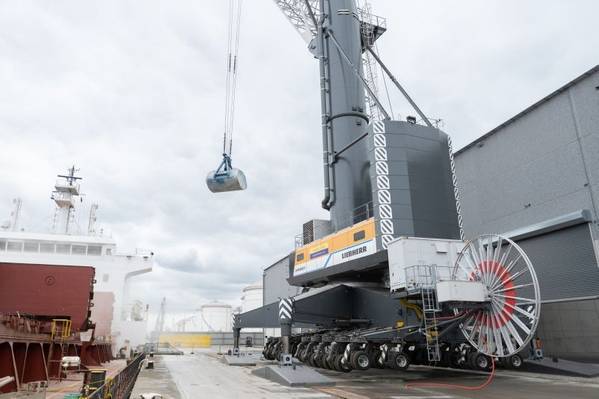
Liebherr, a leader in mobile harbor crane technology, has reached over 2,000 mobile harbor cranes produced and approximately 1,600 units in active service across more than 100 countries.
Key regions have embraced electrically driven mobile harbor cranes; India leads in adoption, followed closely by Türkiye. In Europe, the Netherlands, France and Poland also demonstrate steady demand for e-drive technology, alongside the United States and the United Kingdom.
Between 2019 and 2025, Liebherr recorded an increase of 400% in its electric drive mobile harbor cranes. This increase underlines the clear movement within the industry towards integrating more sustainable technologies in port operations.
The Liebherr drive system portfolio continues to evolve with the different infrastructural and regulatory conditions across global port environments. This means that the electric drive is not just an option when building a new crane, but can also be retrofitted. Cranes that have operated reliably for years can be converted from a diesel to e-drive, supported by Liebherr’s worldwide customer service network.
In this way, port operators are not only responding to changing circumstances, such as state funding programs or infrastructure expansion in ports, but are also modernizing their equipment to ensure continued successful operation for many years to come – always with a focus on efficiency.
During heavy lift operations, cranes often experience idle periods when no load is being moved. In these moments, opting for an e-powered drive offers a significantly more sustainable solution. While a diesel engine continues to emit approximately 24 kg of CO₂ per hour even when idling, the e-drive consumes no extra energy during these pauses. When powered by renewable energy sources, the environmental benefits are greater—handling operations at the quayside with an electric Liebherr mobile harbor crane can reduce CO₂ emissions by up to 100 kg per hour compared with a diesel driven mobile harbor crane.
Beyond environmental advantages, the e-drive also delivers economic and operational benefits. Many countries offer attractive subsidies for the adoption of alternative energy technologies, supporting industries in meeting national CO₂ reduction targets. Additionally, electric drives require less maintenance than their diesel counterparts, eliminating the need for oil changes, fluid checks and filter replacements. This not only reduces operating costs but also simplifies service routines, making the e-drive a suitable choice for efficient and responsible port operations today.

